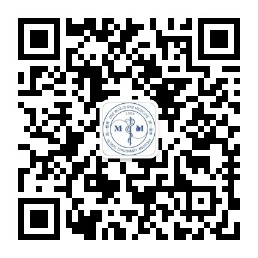目的研究经皮经肝胆道镜(PTCS)、经皮肾镜(PCN)联合超声碎石经胆道造瘘窦道治疗胆管结石的临床效果。方法回顾性分析2016年6月至2018年6月接诊的64例肝内外胆管结石患者的临床资料。64例患者按照治疗方法的不同(均在超声碎石经胆道造瘘窦道治疗基础上)分为PTCS组和PCN组,每组32例。另选2015年1月至2016年6月采用常规手术治疗的32例肝内外胆管结石患者作为常规组。比较三组患者的临床指标、并发症发生率,分析三组患者术前及术后6个月的肝功能情况。结果PTCS组和PCN组患者的手术时间、住院时间、术中出血量和结石复发率均显著少于/低于常规组,结石取净率明显高于常规组(均P<0.05),但PTCS组和PCN组的上述各项临床指标比较,差异均无统计学意义(均P>0.05)。术后6个月,三组患者的血清天门冬氨酸转氨酶(AST)和丙氨酸转氨酶(ALT)水平均显著下降,且PTCS组和PCN组均低于常规组(均P<0.05),但PTCS组和PCN组比较,差异无统计学意义(P>0.05)。结论PTCS、PCN联合超声碎石经胆道造瘘窦道治疗均可显著改善肝内外胆管结石患者的临床指标和肝功能。
当前位置:首页 / 经皮经肝胆道镜、经皮肾镜联合超声碎石经胆道造瘘窦道治疗胆管结石的临床研究
论著
|
更新时间:2020-01-13
|
经皮经肝胆道镜、经皮肾镜联合超声碎石经胆道造瘘窦道治疗胆管结石的临床研究
Clinical study of percutaneous transhepatic cholangioscopy and percutaneous nephroscopy combined with ultrasonic lithotripsy through biliary fistula sinus tract for bile duct stones
- 中文简介
- 英文简介
- 参考文献
ObjectiveTo study the clinical effect of percutaneous transhepatic cholangioscopy (PTCS) and percutaneous nephroscopy (PCN) combined with ultrasonic lithotripsy through biliary fistula sinus tract in the treatment of bile duct stones. MethodsClinical data of 64 patients with intrahepatic and extrahepatic bile duct stones admitted from June 2016 to June 2018 were retrospectively analyzed. All 64 patients were divided into PTCS group or PCN group according to different treatment methods (on the basis of ultrasonic lithotripsy through biliary fistula sinus tract treatment), with 32 cases in each group. Then another 32 intrahepatic and extrahepatic bile duct stones patients undergoing conventional operation from January 2015 to June 2016 were selected as convention group. The clinical indexes and the incidence of complications were compared between the three groups, and the liver function of the three groups before and 6 months after operation was analyzed. ResultsCompared to the convention group, patients in the PTCS and PCN groups obtained shorter operation duration, hospital stay, lower intraoperative bleeding volume and re-occurrence rate of calculi, whereas a higher removal rate of calculi (all P<0.05); however, there were no statistically significant differences in the abovementioned indicators between the PTCS group and the PCN group (all P>0.05). Six months after operation, the levels of aspartate aminotransferase (AST) and alanine aminotransferase (ALT) in the three groups decreased significantly, and the levels were lower in the PTCS and PCN groups than in the conventional group (all P<0.05), but there was no statistically significant difference between the PTCS and PCN groups (P>0.05). ConclusionBoth PTCS and PCN in a combination with ultrasonic lithotripsy through biliary fistula sinus tract can prominently improve the clinical indicators and liver function in patients with intrahepatic and extrahepatic bile duct stones.
-
无




 注册
注册 忘记密码
忘记密码 忘记用户名
忘记用户名 专家账号密码找回
专家账号密码找回 下载
下载 收藏
收藏
